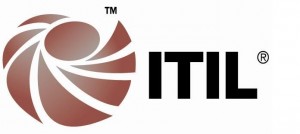So Much Data in The World
The amount of data flowing through the business world today would have staggered professionals even a few years ago when a megabyte seemed an ample measurement for computer space and it was hard to even imagine the need for an exabyte, equal to a billion gigabytes, which we frequently see today.
In fact, data flows through the world like a Niagara at 2.5 quintillion bytes every day, according to an IBM website. That is 2.5 followed by 18 zeroes.
In the business world, someone has to wrestle that deluge of data into something useful for a company as well as ensure the business’s hardware can handle all the information. In most places this obligation falls to the IT department.
To help with the concern, businesses have turned to IT managers, analysts and consultants who have acquired Information Technology Infrastructure Library training, which provides a framework to identify, plan, deliver and support a company’s IT services.
What is ITIL?
 According to the Official ITIL Website, the process “advocates that IT services must be aligned to the needs of the business and underpin the core business processes.”
According to the Official ITIL Website, the process “advocates that IT services must be aligned to the needs of the business and underpin the core business processes.”
The early development of ITIL primarily came from the United Kingdom, and it has emerged as a protocol and best practice to streamline data across an entire company. Today, its five-step process is used by government, manufacturing, retail, technology, entertainment and other industries.
The five steps are service strategy, service design, service transition, service operation and continual service improvement.
Who Uses This System?
Though IT workers such as directors, managers and service personnel are a logical core of people who could benefit from ITIL training and certification, the list extends to include those whose duties reach beyond the IT department.
The HP Learning Center also offers ITIL training and suggests at its website that the training also could help people whose jobs call for working closely with IT, such as business and project managers and analysts.
The ITIL Foundation website lists the four levels of training as:
- ITIL Foundation: The basic introductory level of ITIL and some credits apply toward the next steps.
- ITIL Intermediate Level/ITIL Managing Across the Lifecycle: This includes courses required to enter the lifecycle level classes that focus on the five central principles of service strategy, design, transition, operation and continual improvement.
- ITIL Expert Level: This is for those who show an overall view of the ITIL process and comes after amassing enough credits in the first two levels, according to the Official ITIL Website.
- ITIL Master Qualification: The highest level requires not only the first three steps, but also five years in IT service management that includes extensive working experience with ITIL. Certification “validates the capability of the candidate to apply the principles, methods and techniques from ITIL in the workplace,” the official site said.
Educational Training
After an introduction to ITIL, the curriculum should include service strategy processes, service portfolio management, service design value, technology and architecture, service catalog management and financial management.
Further instruction should cover configuration management, change management and managing service capacity among others, before moving on to event management, access management, request fulfillment, instruction in creating meaningful metrics, the Deming Cycle, CSI model and the seven-step improvement process.
One benefit to online training that could help the individual and company is the universal language those familiar with ITIL share worldwide. Certified ITIL workers can network and share information. Online courses also offer the convenience and flexibility needed by today’s working professionals and those with demanding family schedules.
Gaining ITIL certification can also help give someone a competitive advantage over other IT managers, business analysts and directors when seeking promotions or a new job, as well as demonstrating a drive for advancement.
